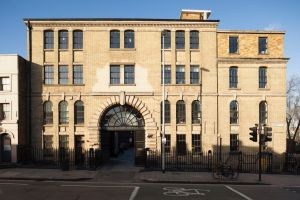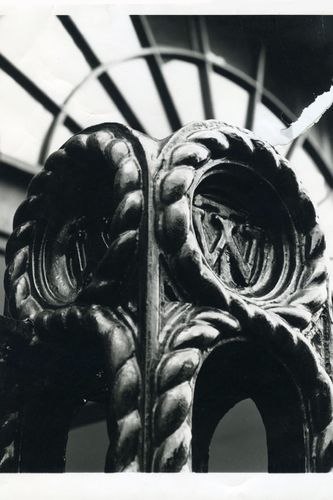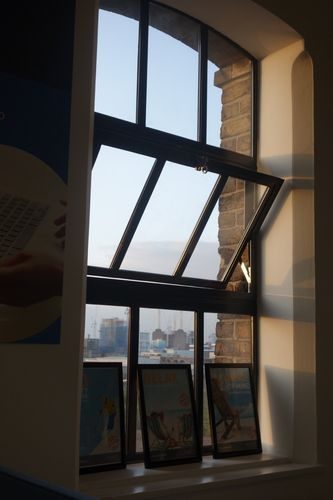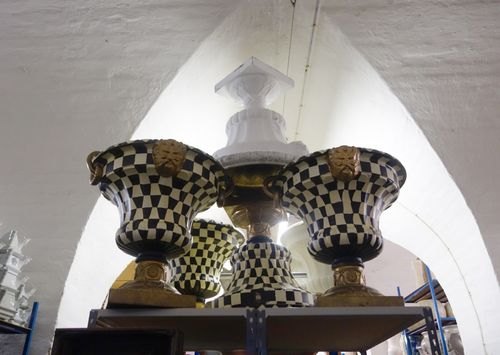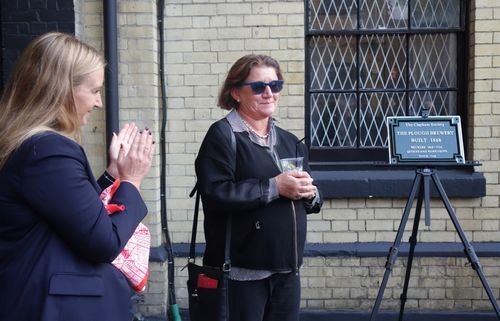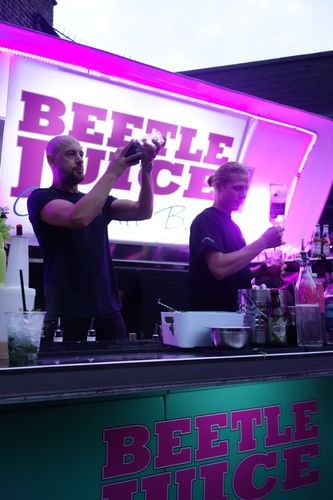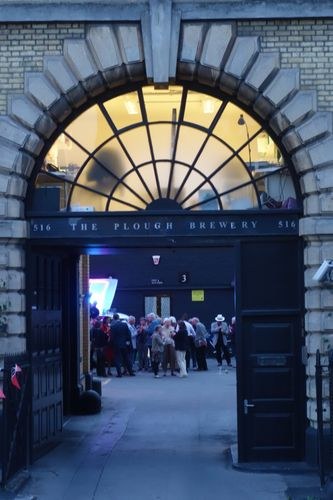The Clapham Society Green Plaques
11. The Plough Brewery
Pictures relating to this history are at the foot of the page

A ‘brew house’ has stood on the site at 516 Wandsworth Road since 1801 as described in the ‘Companion from London to Brighthelstone’ by James Edwards in 1801
‘On the same side is a road (North Row later North Road) which leads to Clapham. At the west corner, formed by this road, is the Nagg’s Head, a good public house kept by a G. Gilbert: opposite is a neat dwelling house belonging to Mr Combs, who has a smaller brewery behind it. On the left is a boundary post which divides the parishes of Battersea and Clapham.’
Mr Combs leased the land from a William Hughes and this first brew house then changed ownership several times before Mr Thomas Woodward aged 32, a brewer from Kennington bought the lease in 1865.
Thomas Woodward was responsible for the current building that was opened on the 3rd February 1869. It is probably around this time that the name was changed from ‘Clapham Brewery’ to ‘The Plough’ as Thomas brought this name with him from the brewery he had run in Kennington. The railings at the front of the building bear his initials, TW.
The adjoining terrace of eight houses was built around the same time and the three nearest to the brewery were at some point converted in to a ‘tap house’ (tavern). There is still evidence that there was a connection between the tap house and brewery at basement level. The tap house became known as The Plough Tavern and it passed to Young’s Brewery, it was also given a new façade and windows although the pattern of the original houses is still evident in the upper floors.
The architectural details of the brewery building combined with the purchase of the freehold in 1885 and the installation of the second artesian well after 1887 would suggest that Thomas was a successful brewer and continued to be until his death in 1900. Thomas Junior had started training under his father at the age of 17 in 1895. The Brewery ownership stayed in trust run by Thomas Senior’s executors, including his widow Amelia until her death in 1911, suggesting unsurprisingly that Thomas Junior at the age of 22 was not trusted to own and run a brewery.
The 403ft deep bore hole and pump was installed by AC Potter & Co of Lant Street Boro’ providing a second artesian well.
After his mother’s death Thomas junior worked for a hop merchant, Biddels who bought the freehold of The Plough in 1913 and subsequently brewed beer under the name of Woodward. Thomas stayed with Biddels until the Brewery was put up for auction with the adjoining houses on the 23 May 1924
Brewers H & G Simonds purchased the building for £17,500 to be used as offices and bottling stores. Therefore it is thought that the year 1924 marks the end of brewing at The Plough. Thomas Woodward was a Simonds sales representative until he retired in 1945.
It was H & G Simonds who installed the very large keystone over the archway, presumably after 1925. This gave the date of the building as 1820 – the reason why the wrong date was carved in to the stone is not known. The keystone was removed in 1968 as it was unsafe and needed to make way for windows.
Simonds were taken over by Courage and Barclay in 1943 and the building continued to be used for storage. This Company became known by the more familiar name of Courage in 1965 as was The Nagg’s Head pub opposite (latterly the Artesian Well) by which time the brewery building had fallen in to disuse and was considered derelict.
Marston properties purchased the derelict buildings in 1968. Very little was left of the machinery or interior save for the features listed with the site as a whole on the 22 May 1974. New floors, staircase and lift were installed to the east wing. The water tanks were removed from the third floor and a caretaker’s flat built. The brewery buildings were leased as offices to a single occupier, The Medicus Group, who took the whole front building and stable block until 2001.
The lower yard was a jumble of portacabins and the storage in the undercrofts was used in the 1970s by Chelsea Girl a fashion label that became River Island. By the 1980s the undercrofts and yard were filled by large chillers belonging to Mayhew Chickens who chopped up the meat ready for the supermarkets. In the early 1990s the yard was cleared to make way for Tun Yard that was built between 1995-1997.
The brewery building underwent a major refurbishment in 2002 when it was converted in to smaller offices. In 2015 working with Lambeth and English Heritage Marstons installed new steel double glazed windows echoing the original fenestration details of the 1860s to the main building on Wandsworth Road.
The current occupiers make up part of The Plough Brewery’s rich history, including Anya Hindmarch for 16 years, Rob Van Helden Floral Designs 11 years, PixL8, Square Up Media and CGP Design Ltd 10 years, Swerve Concepts 5 years, Be Good Ltd 4 years, Holbrook Studios 3 years, Payment Card Solutions UK and Angie Smith Style Ltd 2 years and Owl Tutors for 1 year.
On 6 September 2017 a Clapham Society Green Plaque was unveiled on the building by Anya Hindmarch, the distinguished designer of ladies’ handbags whose headquarters are in the building. Marstons generously hosted a reception in their courtyard and took guests on tours of the building.
In 2018 the building will be 150 years old and Marstons will be celebrating ownership of the building for one third of those years
Please wait for the gallery to load (18 pictures), it may take several seconds.
